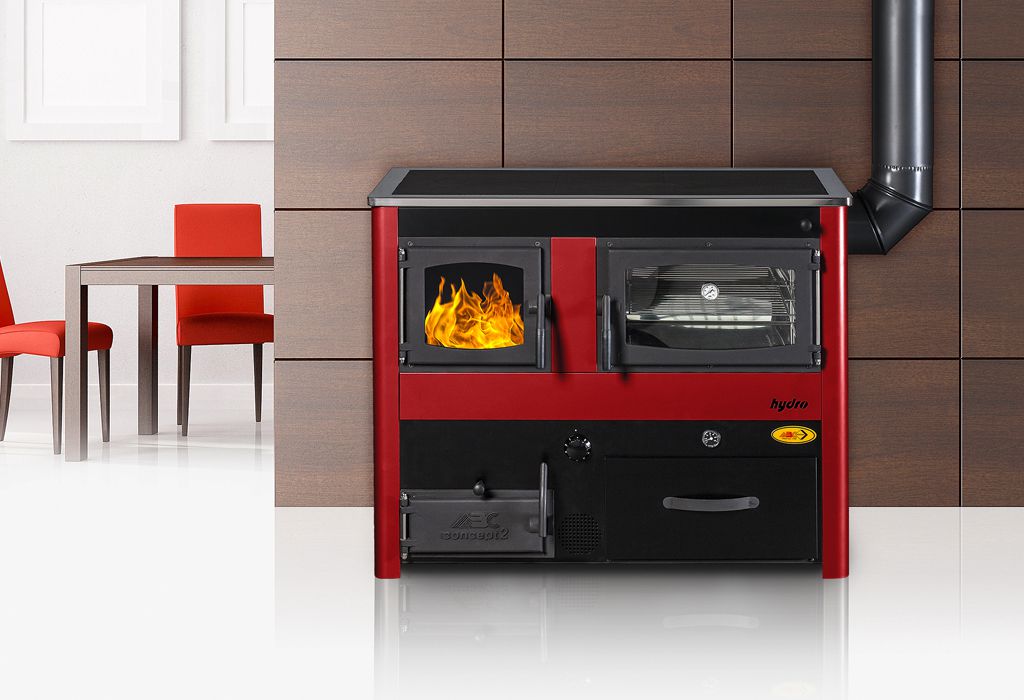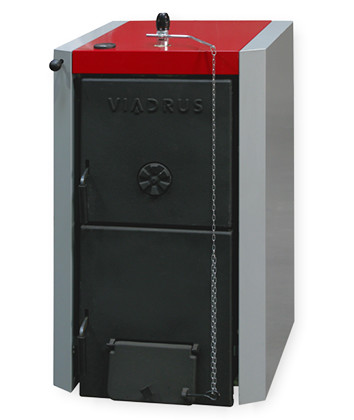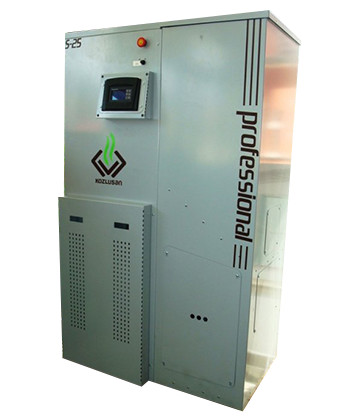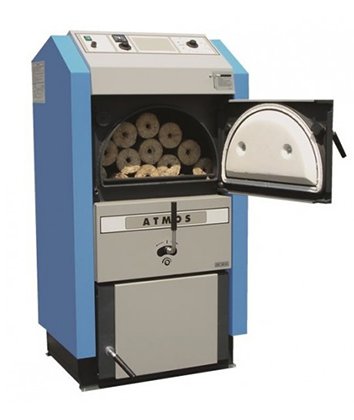Solid fuel boiler selection guide
Solid fuel boiler selection guide
After numerous inquiries from our customers about the choice of central heating boiler, we decided to write this short guide. The aim of this guide is to acquaint you with the different types of solid fuel boilers for central heating, their advantages and disadvantages.
Generally about boilers and heating
In the field of central heating, new solutions and improvements are constantly appearing and need to be monitored and known. It strives for higher efficiency and the lowest possible percentage of bad particles during combustion.
Higher usability for the end user means savings, and a lower percentage of bad particles means nature conservation and environmental awareness.
In addition to greater efficiency and reduced negative impact on the environment, new technologies allow us to automate, ie smart management of the boiler. One example of this is a pellet boiler.
With the help of automation, it controls the operation of the boiler in such a way that it works only when necessary. In other words, once the temperature in the house is equal to the desired, the boiler stops working and switches to “Stand by”.
This mode of operation is possible only with boilers that have an automatic energy supply system – pellets, oil, gas.
Our market is well supplied with new and innovative technologies, but customers prone to various suggestions and insufficiently informed often make the wrong choice.
The rules of the profession stipulate that heating systems should be renewed every 10 years. This especially applies to boilers and water heating devices in the system.
Elements that can serve longer than that are radiators, radiators and piping. Valves and control devices need to be replaced for longevity and for new and better technical solutions that have appeared on the market in the meantime.
The main parts of the usual central heating systems are the furnace – boiler, pipelines, radiators, fittings (valves and other shut-off elements), expansion vessel, circulation pump and devices for regulation and control of the heating process.
IMPORTANT: When installing a new system, do not choose items that are outdated and uneconomical!
Central heating boilers differ structurally according to the type of fuel, but also according to some other characteristics, the most important of which is the purpose in terms of power.
The construction of boilers for the so-called floor heating, designed for smaller spaces up to the size of a medium-sized apartment and those for large systems. The former often have to be adapted to work in residential premises, without a special boiler room.
Floor boilers
The smallest and simplest construction is the so-called boiler stove. It is intended exclusively for central heating of apartments or parts of a family house.
It is heated by solid fuel and is suitable for smaller spaces as it serves central heating and cooking. It allows the cheapest installation of central heating, because usually in the room where the boiler is not installed radiators (radiators). Such boilers are made in the dimensions of standard kitchen elements.

ABC Concept 2 – example of a floor boiler
Characteristics:
- cheap installation
- the simplest construction
- intended for central heating
- uses solid fuel for energy
- serves central heating and cooking
- dimensions of standard kitchen elements
Wood and pellet boilers
It has been proven that by burning wood logs we get the most economical heating and therefore we should not hesitate and / or consider this method of heating primitive.
The technology has advanced and today there are constructions of boilers on wood with a high efficiency.

Viadrus U22 – example of a wood boiler
The efficiency of wood-fired boilers is around 70%, while pellet boilers have an efficiency of about 90%.
The pellet boiler has a high efficiency due to the shape of the pellet and its low humidity (less than 5%), which enables its dosing and higher energy value than wood in logs (humidity around 20%).

Slimpel – example of a pellet boiler
Wood or pellet boiler?
When thinking about solid fuel boilers are the two most popular solutions. Wood boilers and pellet boilers. Each of them has its advantages (but also disadvantages) and their choice varies from person to person.
To facilitate the selection follow the main advantages and disadvantages of these two types of boiler.
Advantages of wood boilers
- low initial investment
- cheap and easily available energy source
- good usability
- easy maintenance
Disadvantages of wood boilers
- there is no possibility of automatic heating
- there is no possibility of regulating the boiler power
- wood preparation and storage can be a problem
- inability to turn off when the temperature reaches the default
- for optimal work, wood preparation is required at least 2 years in advance
Advantages of pellet boilers
- automatic fuel dosing
- simple and easy maintenance
- high efficiency (over 90%)
- room thermostat controlled
- automatic shutdown when the temperature reaches the set point
- it is possible to set from when to when we want the boiler to work
- possibility to buy fuel as needed and easy storage
Disadvantages of pellet boilers
- high initial investment
- unstable pellet price
- work dependent on electricity
Pyrolytic boilers
These boilers are named after pyrolysis, the phase of wood combustion that occurs at temperatures above 100 ° C. At this stage, thermal heating begins to release from the wood the so-called pyrolytic gases.
Thanks to the special construction of the boiler, regulation and the built-in fan in pyrolytic boilers, the pyrolysis phase is especially emphasized.
Pyrolysis boilers usually have a two-part firebox and a variable speed fan that supplies the required amount of air.

Atmos DC – example of the pyrolysis boilers
In the upper part of the firebox of the pyrolytic boiler, the wood dries, thermally decomposes and creates embers. Due to the operation of the fan that brings oxygen around the grill, vegetation, ie the creation of wood gas, occurs.
In the upper part the primary air is not sufficient for combustion, but only for gasification.
Due to the pressure difference (depending on the place of installation of the fan), the resulting wood gas passes into the lower part of the firebox. By passing through the grill area and through the nozzle, the gas ignites and burns completely.
Completeness of combustion is ensured by supplying secondary air through the nozzle. The quality and appearance of the flame is reminiscent of burning oil or gas on conventional burners.
Pyrolysis boilers have efficiency rates of about 90%! Pyrolysis boilers can save up to 25% of the total wood needs per year.
Another advantage of these boilers is that they have a longer time between two charges (8-12 hours), and it depends on the size of the boiler, heat tank, wood humidity, etc. Due to the high quality of combustion, the amount of ash generated is small.
Boiler operation is simple, and automatic regulation provides high comfort of use.
Notes
Firewood in these boilers must be dry (humidity 15 – 25%). The wood that was cut and burned in the same year is not of adequate quality. Increased humidity results in less available heat. In addition, it results in the creation of smaller amounts of wood gas during the pyrolysis process, thereby reducing the degree of boiler efficiency.
Due to the large heat release in pyrolytic boilers, special safety thermal elements and storage tanks are installed to accumulate excess hot water produced. Depending on the manufacturer or the number of radiators, for every 1000W, 35-50 liters should be provided in the storage tank.
Other elements
Other elements such as the circulation pump, expansion vessel, safety valves and other necessary elements in the boiler room are procured and installed separately.
Proper knowledge of the boiler requires basic knowledge of all available solutions. One common element is the power of the boiler. Manufacturers declare the degree of efficiency and power of the boiler for individual types and they must be as close as possible, but above the calculated heat losses.
It should also be borne in mind that most boilers operate economically only in their optimal mode, so leaving a reserve of performance (by purchasing a larger boiler) does not pay off due to operation.
It is reasonable that the preparation of domestic hot water is in the system, preferably as a hot water boiler, especially insulated from the boiler. The volume of the boiler is determined according to the needs of the facility. Such a boiler can also have a built-in electric heater that we use for the period of the season without heating. We choose a boiler with two tubular heat exchangers for connection to solar collectors.
If you have additional questions, we are at your disposal by phone (01) 7789 -544 or by e-mail at info@ekokamini.hr.

